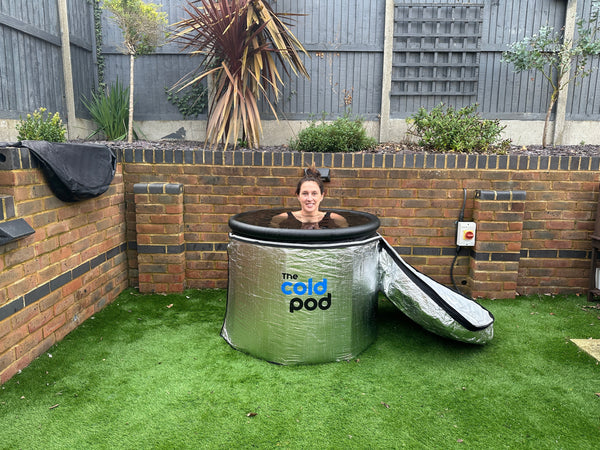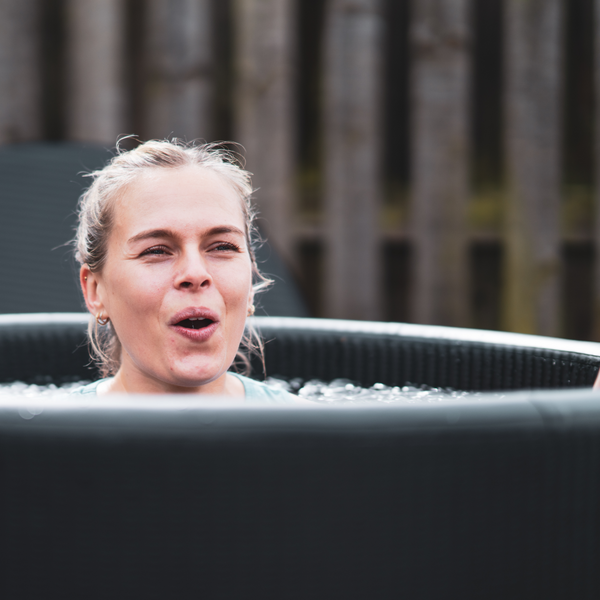Taking an ice bath can offer a variety of health benefits, ranging from aiding recovery after a strenuous workout to increasing your overall well-being. However, it might be dangerous if you don’t know what you’re doing. That is why understanding the dos and don’ts of taking an ice bath is key. We’ll give you all the information you require to master the art of cold dips. You’ll learn how to incorporate them into your routine safely and effectively for optimum results. So prepare to stay cool, recover faster, and boost your health with these expert tips!
What are Ice Baths?
Ice baths, also known as cold water immersion, involve submerging your body in cold water for a brief period. Typically, ice baths involve using ice cubes or adding cold water to the bath to achieve a temperature between 10-15°C.
The practice is commonly used by athletes to help reduce inflammation, aid in muscle recovery, and enhance performance.
Whilst cold dips have become a popular tool for athletes, they are not just reserved for sports recovery. Anyone can incorporate ice baths into their routine to help manage stress, boost circulation, and promote overall wellness.
If you are new to cold dipping, it’s essential to approach the practice with caution. Jumping into an ice bath without preparation can be risky, and improper technique can lead to injury or illness. To get the most out of your cold dipping experience, it’s crucial to know the dos and don’ts.
The Benefits of Ice Baths
Ice baths may not sound like a luxurious way to spend your time, but the benefits they provide are truly amazing. Here are just a few of the many reasons why you should consider adding cold dips to your recovery routine:
- Reduces Inflammation: Ice baths help reduce inflammation and soreness by constricting blood vessels, which lowers the amount of fluid that accumulates in your tissues. This can help speed up your body’s recovery process and improve muscle repair.
- Relieves Pain: Ice baths have been shown to help relieve pain by numbing the nerves that transmit pain signals to your brain. This can be particularly helpful for those suffering from chronic pain or injuries.
- Boosts Circulation: While initially constricting blood vessels, ice baths actually increase blood flow once you get out of the bath. This increased circulation can help deliver oxygen and nutrients to your muscles, which can help promote healing.
- Encourages Relaxation: The intense cold temperature of an ice bath can actually trigger the release of endorphins, which are the body’s natural painkillers and mood boosters. This can leave you feeling calmer and more relaxed after your bath.
- Improves Mental Health: Studies have shown that cold dipping can improve mental health by decreasing symptoms of anxiety and depression. This could be because cold exposure triggers the release of feel-good hormones like dopamine and norepinephrine.
Overall, ice baths can be a tremendously effective technique for physical and mental recovery. If you’re looking to boost your performance, recovery time, or overall well-being, adding ice bathing into your routine may be just what you need.
Dos: Tips for Preparing for an Ice Bath
If you’re considering taking an ice bath, it’s essential to know how to prepare properly. Here are some dos and tips to follow before taking the plunge:
- Hydrate Yourself: Make sure you’re adequately hydrated before getting into an ice bath. This will help your body adjust to the cold water more quickly.
- Start Slowly: If you’re new to ice baths, don’t jump straight into a full bath. Begin with cold showers or gradually add ice to your baths to allow your body to adjust.
- Choose the Right Time: The best time to take an ice bath is after an intense workout when your muscles are most in need of recovery. Avoid taking one just before bed, as the cold water may interfere with your sleep.
- Have a Warm Blanket and Towel Ready: After your ice bath, make sure to have a warm blanket and towel nearby to wrap yourself in and dry off quickly.
- Keep Yourself Entertained: While sitting in a cold bath may not sound like the most exciting thing to do, make the experience more enjoyable by listening to music or a podcast.
By following these tips, you’ll be able to prepare yourself for an ice bath safely and enjoy its benefits fully.
Don’ts: Common Mistakes to Avoid when Taking an Ice Bath
While ice baths can provide significant benefits, they can also be dangerous if not done properly. Here are some common mistakes to avoid when taking a cold dip:
- Don’t stay in the ice bath for too long: It may be tempting to push yourself to stay in the ice bath longer to reap more benefits. However, it’s essential to listen to your body and get out when you start feeling uncomfortable. Staying in the ice bath for too long can cause hypothermia, which is a severe medical condition.
- Don’t use ice directly on the skin: While using ice may seem like a good idea, it can damage the skin. Instead, use a cold water bath and add ice to it gradually.
- Don’t submerge your head: You should never submerge your head in the ice bath. This can cause a sudden drop in blood pressure, which can be dangerous.
- Don’t take an ice bath if you have certain medical conditions: People with heart problems, high blood pressure, or nerve damage should avoid ice baths. Additionally, pregnant women should consult with their doctor before taking an ice bath.
- Don’t take an ice bath if you are sick: If you are already feeling under the weather, an ice bath can further weaken your immune system and make your condition worse.
By avoiding these common mistakes, you can safely incorporate ice baths into your routine and enjoy the benefits they provide. Always listen to your body, and if something feels uncomfortable or wrong, get out of the ice bath immediately.
How Long Should You Stay in an Ice Bath?
When taking an ice bath, the length of time you should spend in the cold water depends on your experience and comfort level. Generally, it is recommended to stay in the ice bath for 10 to 15 minutes. If you are new to ice baths, however, you should begin with shorter periods of time and gradually increase as you become more comfortable.
It essential to listen to your body and not overexert yourself. If you begin to feel uncomfortable or experience pain, it may be time to end your ice bath session.
On the other hand, if you feel fantastic and energised after 10 to 15 minutes, you may wish to continue for a few minutes longer.
Remember that the purpose of an ice bath is to give your body a cold shock in order to reduce inflammation and speed up recovery. You don’t have to soak in an ice bath for hours to reap these benefits.
In fact, longer sessions may cause harm to your skin and muscles. It is also crucial to have a plan for warming up your body following your ice bath session. Stretching, using a warm towel or blanket, or simply walking around may help get your blood circulating.
Overall, the key to determining how long to spend in an ice bath is to listen to your body’s signals and be mindful of your comfort level. By following these tips, you can safely and efficiently add ice baths into your routine and reap the wonderful benefits.
Recovery Techniques after an Ice Bath
It’s essential to give your body time to recover after a revitalising cold dip. Here are some techniques to help you recover after an ice bath:
- Stay warm: After your ice bath, wrap up in warm clothing and dry off with a warm towel or blanket. This helps your body to return to its normal temperature.
- Hydrate: Following an ice bath, it is vital to drink water or other hydrating fluids. It helps replenish lost fluids, as well as boosting your circulation, metabolism, and digestion.
- Light Exercise: Gentle activity, such as yoga or walking, may help to alleviate muscular soreness and improve circulation.
- Stretching: Stretching can help to reduce muscle stiffness Try stretching to help straighten out any sore muscles.
- Contrast therapy: Alternating between ice and heat therapy is another approach for speeding up recovery. After your ice bath, have a warm shower and finish with a cold blast of water. This encourages circulation, relieves muscle tension, and promotes healing.
You’ll recover from your cold dip faster and get the most out of the experience if you use these strategies. To get the best results, take your time, relax, and listen to your body.
Who Should Avoid Ice Baths?
As with any therapy or exercise, there are certain individuals who should avoid ice baths altogether. Those who have Raynaud’s disease, cold urticaria, or a history of frostbite should not use ice baths. If you have open wounds or broken skin, you should also avoid ice baths as it can lead to infection. If you are pregnant, it is not recommended to take ice baths as it can cause complications for both you and your baby. If you have any concerns about whether an ice bath is safe for you, it is best to consult with a medical professional. It is always better to err on the side of caution to ensure your safety and well-being.







